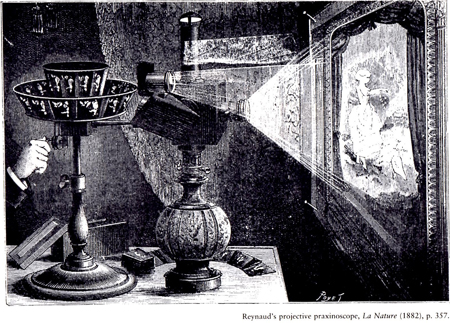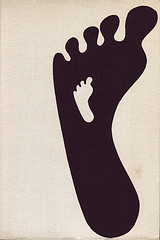
Ethnographers are traditionally known for immersing themselves in the everyday lives of people and paying attention to the details and context of their activity. Anthropologists after Malinowski considered extended participant observation in the lives of the people they studied a prerequisite for analyzing culture. However, in the last few decades of the twentieth-century ethnographers began to consider their analysis increasingly as a challenge of interpreting cultural phenomena rather than explaining their variation.
With the increasing availability of the Web, researchers using computer-mediated communication, i.e. digital, devices in their projects label their work under a range of categories. I’ve discussed ethnography several times before, the first taking note of the trend toward virtual anthropology and the next talking about the significance of Tom Boellstorff’s ethnography of Second Life, followed by a couple of posts about ethnography’s relationship to empathy and globalization.
In 2003, Cheskin’s Davis Masten and Tim Plowman characterized digital ethnography as the next wave in understanding the consumer experience in Design Management Journal. To my way of thinking they were correct in asserting that, “Digital Ethno enables participants to convey the real-time richness of their own lives and environments.”
Along with any new wave in understanding people’s experience comes a range of neologisms intended to clarify the multiplicity of research options that emerge. Kozinets recently suggested that the use of ethnography in computer-mediated research activities is best described as Netnography, a neologism he dates from 1996. He argues for the use of the term, netnography, in the following way:
Netgography differs from other qualitative Internet research techniques in that it offers, under the rubric of a single term, a rigorous set of guidelines for the conduct of computer-mediated ethnography and also, importantly, its integration with other forms of cultural research (p. 15)
However, as Kozinets suggests, the 2008 survey of Intenet users done by the Annenburg Digital Futures Project found that 56% of the members of online community members meet other members of their online community face-to-face. And, as Kozinets further notes, the Annenburg research did not include social networking sites, making the figures conservative ones since, as Brian Solis recently noted, social networking combined with geo-location and augmented reality applications is bridging the online and offline interaction. Kozinets insists that this simply means research must blend ethnography and netnography to study the intermix of online and offline activity.
I won’t go into all the reasons I think Kozinets thinking on the relation between netnography and ethnography fails to persuade. Suffice it to say that, to my mind, as Web 2.0 increasingly permeates peoples’ everyday lives, the term netnography fails to sufficiently describe the way ethnography works in a consumer environment where digital devices are ubiquitous.
As people increasingly access the Web and engage online communities on the go, the notion that this is happening on the net seems quaint. If any term is needed other than ethnography, I’d suggest digital ethnography remains the most fitting. When we consider mobility as part of a ubiquitous computing environment, defining the relationship between space and place increasingly requires analyzing social practices rather than simply distinguishing a time and location for an activity.
As Johanna Brewer and Paul Dourish observe, “space is not simply an ‘inert container’ for the places of everyday experience; rather, space itself is the outcome of particular ways of reasoning about and representing the world.” Brewer and Dourish note, for example, that research on mobile messaging used to coordinate meet-ups or other rendezvous allow for people to show-up using a proxy form of participation before they get to the physical meeting. Additionally, the recent research by Hope Jensen Schau, Albert M. Muniz, Jr., and Eric J. Arnould, How Brand Community Practices Create Value from the Journal of Marketing explicitly approaches brand communities using a range of qualitative techniques, including netnographic, to study participants across several years both online and off.
My inclination regarding ethnographic methods is to endorse the point of view offered in Sunderland and Denny’s Doing Anthropology in Consumer Research. They note,
…ethnography is not a method per se, but rather a collection of methods…In commercial consumer research circles, one sometimes hears various rules, on the order “it is only ethnography if there is observation,” or “video,” or “multiple meetings,” or “sufficient time,”…or…(filled in with any number of favorite and idiosyncratic rules. But what seems most accurate about ethnography as a companion mode of discovery in cultural analysis is that as a methodology it must be viewed through, and seen as permeated with, the sociocultural. (p. 50, my emphasis)
In other words, the specifics of the methodology matter less than its purposive application. Following Geertz, Sunderland and Denny contend, the methodologies employed, whether participant observation, focus groups, in-depth interviews, diaries (online or offline), village censuses, surveys, or maps, “are not ‘ethnographic’ per se, but…are made so by the intellectual framing of the task” (p.52).
The purpose of ethnographic research is as important as the methods used, as long as the sociocultural context remains in focus. For example, whether we use ethnography in marketing or design research remains irrelevant to the methods employed. What matters is whether we develop the research questions around the assumption that sociocultural practices provide the data source for answers.
Read the rest of this entry »




 Posted by Larry Irons
Posted by Larry Irons 














